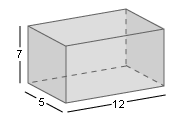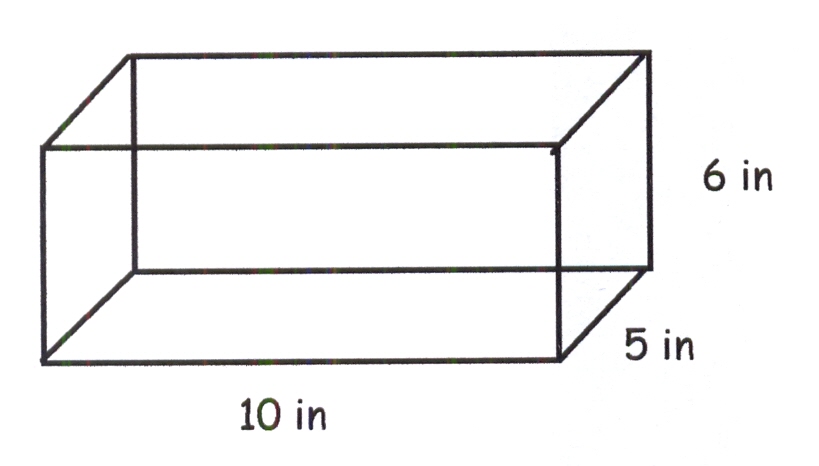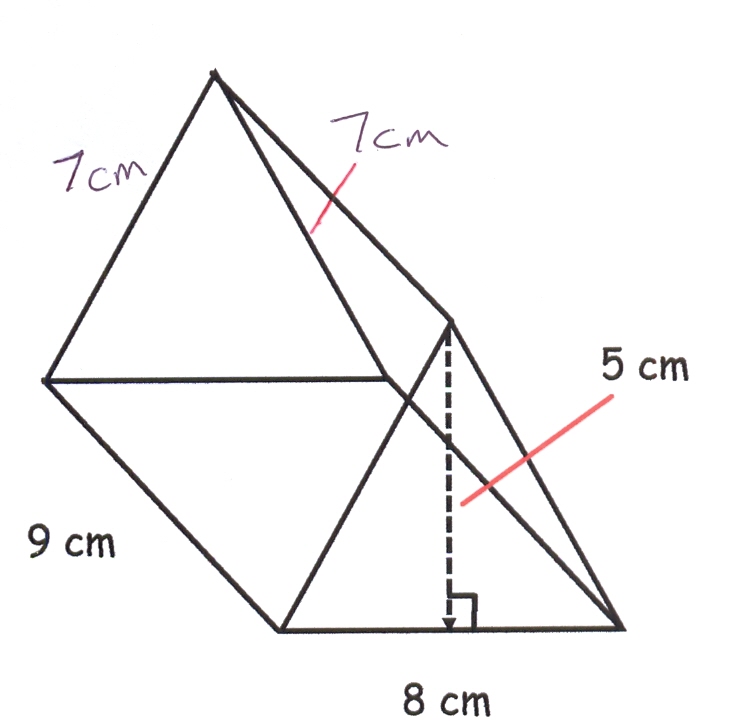Surface Area Of Prisms, Cylinders And Cubes

Questions and Answers
- 1.
What is the total area of total surface area of a cube with edges of 8.3cm?
- A.
68.89cm
- B.
413.34cm^2
- C.
413.34 cm
Correct Answer
B. 413.34cm^2Explanation
The total surface area of a cube is calculated by finding the area of each face and adding them together. Since a cube has 6 faces, each face has an area equal to the length of an edge squared. In this case, the length of each edge is 8.3cm, so the area of each face is (8.3cm)^2 = 68.89 cm^2. Therefore, the total surface area of the cube is 6 times this value, which is 6 * 68.89 cm^2 = 413.34 cm^2.Rate this question:
-
- 2.
What is the surface area of the rectangular prism?
- A.
358
- B.
420
- C.
179
- D.
210
Correct Answer
A. 358 -
- 3.
What is the surface area of the cyliner?
- A.
96
- B.
1005.31
- C.
2412.74
- D.
804.25
Correct Answer
B. 1005.31Explanation
The correct answer is 1005.31. To find the surface area of a cylinder, we need to calculate the sum of the areas of the two bases and the lateral surface area. The formula for the surface area of a cylinder is 2πr^2 + 2πrh, where r is the radius of the base and h is the height of the cylinder. Without further information given in the question, we cannot determine the exact values of r and h. Therefore, we cannot calculate the surface area of the cylinder and provide an explanation for the given answer.Rate this question:
-
- 4.
Which rectangular prism has a larger surface area?Prism A: Dimensions are 5 by 4 by 2Prism B: Dimensions are 6 by 3 by 2
- A.
Prism A
- B.
Prism B
- C.
They have the same Surface Area
Correct Answer
A. Prism AExplanation
Prism A has a larger surface area because the formula to calculate the surface area of a rectangular prism is 2lw + 2lh + 2wh. By plugging in the dimensions of Prism A (5, 4, and 2), we get 2(5)(4) + 2(5)(2) + 2(4)(2) = 40. By plugging in the dimensions of Prism B (6, 3, and 2), we get 2(6)(3) + 2(6)(2) + 2(3)(2) = 36. Therefore, Prism A has a larger surface area of 40 compared to Prism B's surface area of 36.Rate this question:
-
- 5.
What is is the total surface area of a triangular prism with the dimensions of 7cm X 15cm X 6cm?
- A.
357cm^2
- B.
49cm^2
- C.
630cm^2
Correct Answer
A. 357cm^2Explanation
The total surface area of a triangular prism can be calculated by finding the sum of the areas of all its faces. In this case, the triangular prism has two triangular faces and three rectangular faces. The area of each triangular face can be calculated using the formula 1/2 * base * height, where the base is 7cm and the height is 15cm. The area of each rectangular face can be calculated using the formula length * width, where the dimensions are given as 7cm X 15cm, 7cm X 6cm, and 15cm X 6cm. Adding up the areas of all the faces gives a total surface area of 357cm^2.Rate this question:
-
- 6.
What is the formula for the surface area of a rectangle?Note: h=height, l=length, w=width
- A.
3x lbh
- B.
Base x height
- C.
2lw +2wh + 2lh
Correct Answer
C. 2lw +2wh + 2lhExplanation
The formula for the surface area of a rectangle is 2lw + 2wh + 2lh. This formula accounts for all six sides of the rectangle: the two length sides, the two width sides, and the two height sides. By adding up the areas of each side, we can find the total surface area of the rectangle.Rate this question:
-
- 7.
Find the surface area
- A.
280 squared inches
- B.
140 squared inches
- C.
720000 squared inches
- D.
300 squared inches
Correct Answer
A. 280 squared inchesExplanation
The given correct answer is 280 squared inches. This suggests that the surface area being referred to in the question is 280 squared inches.Rate this question:
-
- 8.
Find the surface area.
- A.
211 squared centimetres
- B.
238 squared centimetres
- C.
180 squared centimetres
- D.
175 squared centimetres
Correct Answer
B. 238 squared centimetres -
Quiz Review Timeline +
Our quizzes are rigorously reviewed, monitored and continuously updated by our expert board to maintain accuracy, relevance, and timeliness.
-
Current Version
-
Mar 16, 2023Quiz Edited by
ProProfs Editorial Team -
Aug 28, 2014Quiz Created by
Lucasewing
 Back to top
Back to top





